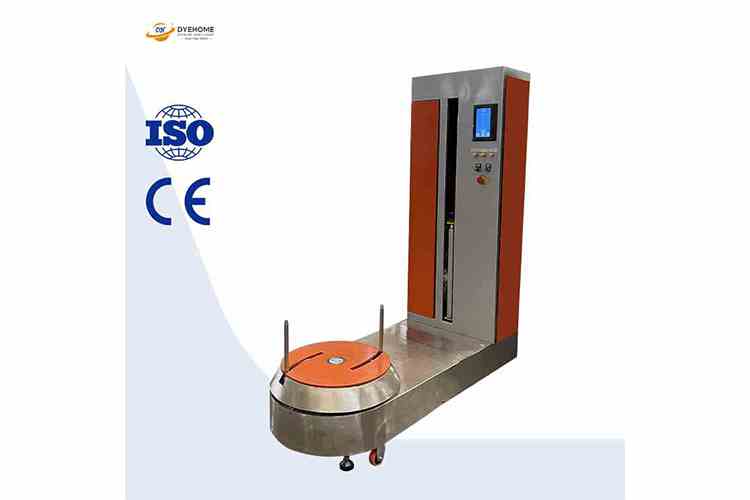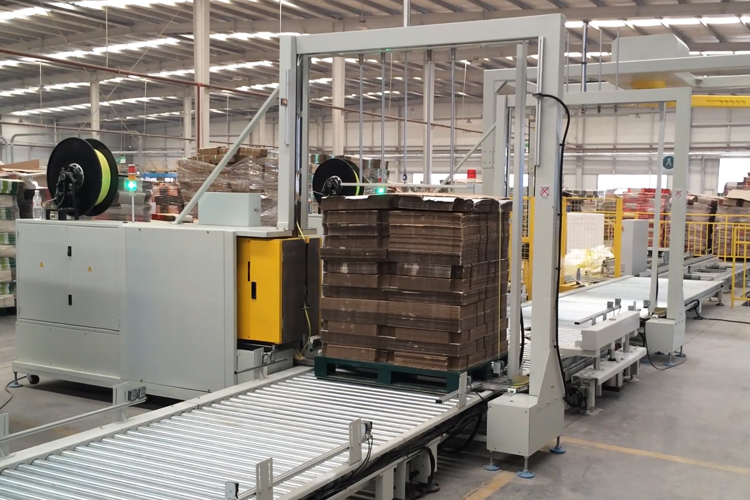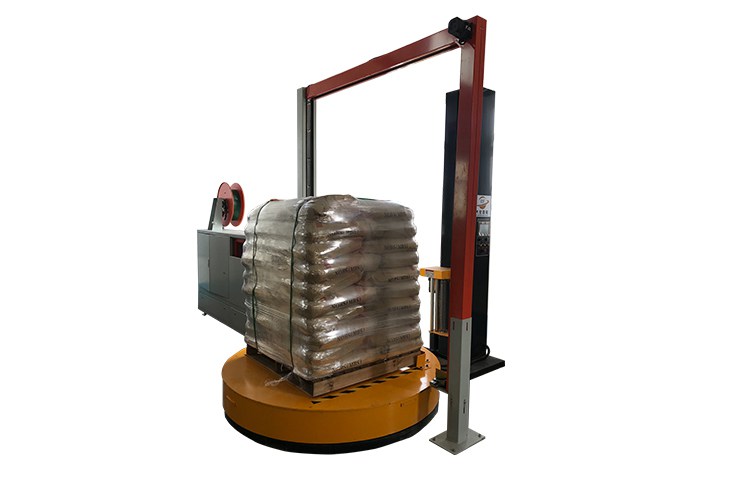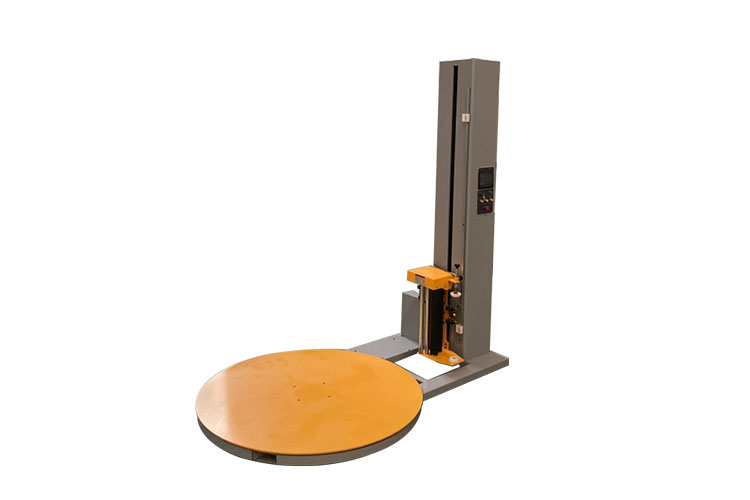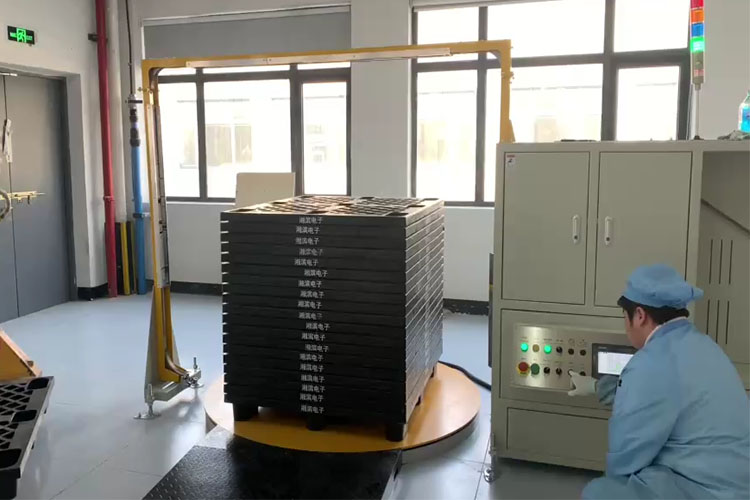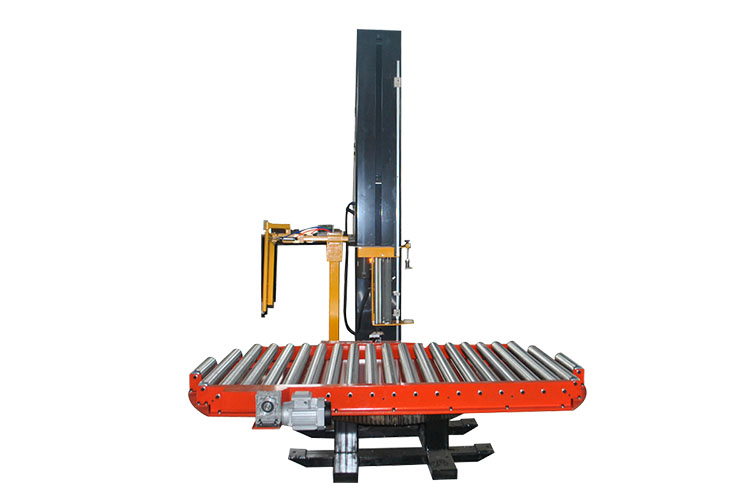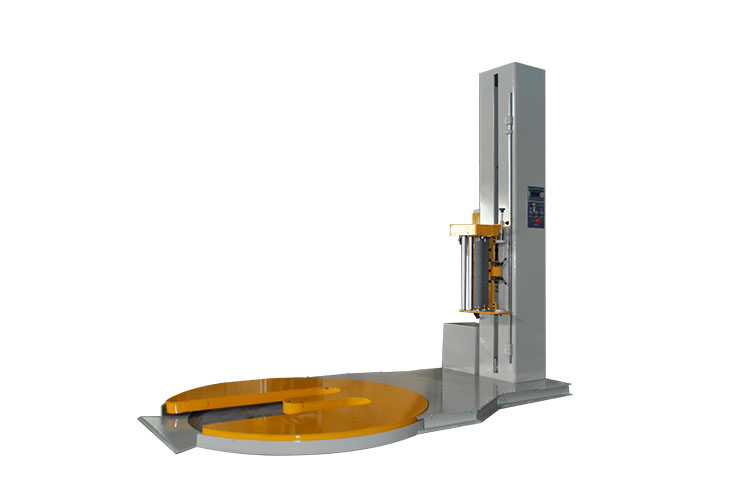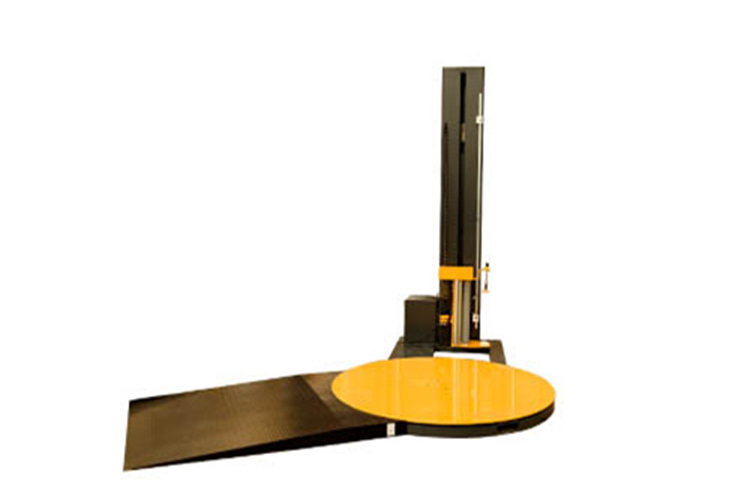Horizontal Online Automatic Film Wrapping Machine: A Packaging Solution Designed for Plates, Tubes, and Profiles
Date: 2025-08-18Id:347Views:
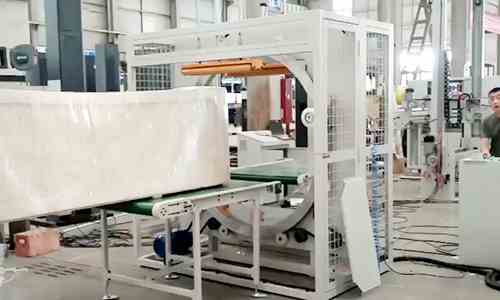
Challenges and Solutions for Packaging Long Goods
In industries such as building materials, aluminum profiles, tubes, paper rolls, wood panels, and home furnishings, packaging long or irregularly shaped products has always been a challenge. Traditional manual wrapping methods are inefficient and unstable, prone to loosening and damage during transportation. The emergence of horizontal online automatic film wrapping machines provides a dedicated, fully automated packaging solution for these products. Using a horizontal wrapping method, it evenly applies stretch film to the product surface, enabling both single-piece packaging and overall reinforcement of entire bundles, significantly improving packaging efficiency and stability. Equipment Principle and Core Features
The horizontal online automatic film wrapping machine uses a motor-driven ring-shaped film frame to wrap around the product. The product is then conveyed along the conveyor line through the ring, achieving full coverage and packaging. The machine is often equipped with a PLC control system and a touchscreen interface, allowing for precise control of parameters such as the number of wraps, reinforcement positions, and film tension. The film frame supports 250% pre-stretching adjustment, effectively reducing film consumption while ensuring packaging security. Conveyor options include rollers, chains, or belts, depending on the industry, allowing for seamless integration into existing production lines.
Applicable Industries and Application Value
The horizontal online automatic film wrapping machine is widely used for long or cylindrical products such as aluminum profiles, plastic pipes, panels, furniture, and textile rolls. Compared to manual or semi-automatic methods, this machine not only improves efficiency but also ensures consistent packaging for each product through standardized processes, enhancing the overall appearance and transportation stability of shipped products. The moisture, dust, and wear-resistant properties of this machine are particularly effective for businesses exporting or shipping long distances. Case Study: Production Line Upgrade for an Aluminum Profile Company
An aluminum profile company had previously relied on manual film wrapping for shipment, which was not only time-consuming and labor-intensive, but also frequently resulted in film loosening and scratching during transportation. After introducing a horizontal inline automatic film wrapping machine, the equipment seamlessly integrated with the roller conveyor line, reducing the average wrapping time for a single profile to approximately one minute. By incorporating end and mid-section reinforcement rings, the product remains secure during transportation, reducing surface scratches by over 80%. Customer satisfaction with packaging neatness and delivery quality has significantly increased.
Conclusion and Selection Recommendations
When selecting a horizontal inline automatic film wrapping machine, companies should focus on compatibility with their existing production lines, including product size range, film frame diameter, pre-stretching ratio, and conveying method. They should also consider the equipment's scalability. A well-chosen model not only improves packaging efficiency for long-length goods but also reduces labor and consumables costs over the long term, helping companies maintain their competitive edge in a highly competitive market.
Related


